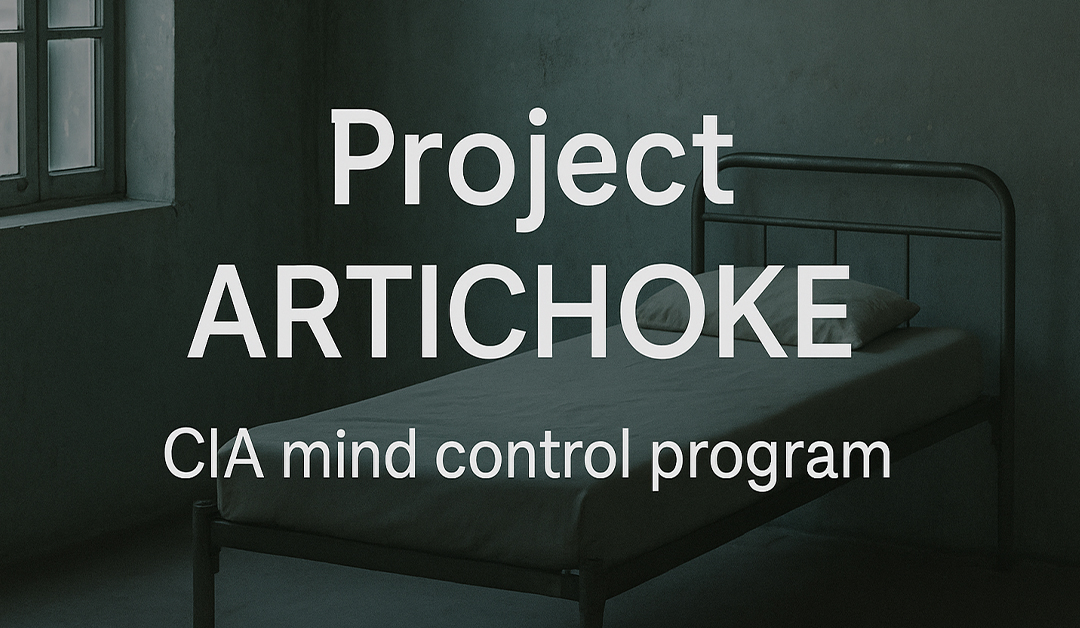A declassified CIA document lays bare the disturbing logistics behind Project ARTICHOKE-a secret program that combined chemical, psychological, and environmental controls to extract confessions and compliance from unwilling subjects.
"The ideal situation would be to create a complete and perfect amnesia in every subject."
- Internal CIA memorandum, ARTICHOKE Project
This wasn’t science fiction. It was a manual.
The file reads like a field guide for pharmaceutical mind control, laying out everything from room layouts to optimal lighting, preferred floor textures, and even the psychological value of fake names for interrogators.
🛏️ Two Rooms, One Goal: Total Compliance
"Artichoke operations are best carried out in hospital-type environments. If not possible, safehouses will do."
- CIA memo, 1952
Operations required two adjoining rooms and a private bathroom. One was the stage-equipped with a bed, couch, or cot. The other? A quiet, soundproof observation room where agents could monitor, record, and steer the session.
The methods were clear: inject the subject with truth-serum-like chemicals, confuse them with shifting interrogators, and if possible, manipulate them into signing documents, writing letters, or posing for compromising photos.
🧠 Confusion as a Weapon
"If the technique is prolonged, the subject will become more and more conscious of chemical use. But over time… their mind will become so disorganized they may not remember what they said-or to whom."
- ARTICHOKE field procedures
This wasn’t just coercion.
It was engineered dissociation.
The agents hoped to achieve something close to chemical hypnosis, with false memories, foggy recollections, and psychological unraveling.
But it didn’t always work. Some people reacted violently. Others became catatonic. Still, the CIA saw the approach as promising.
🛏️ No Cells, Just "Safe Houses"
"It would be best to carry out Artichoke operations in a safe house… not in a military prison, concentration camp, or barracks."
- Internal recommendation
The goal wasn’t to look clinical-it was to feel comfortable. Artichoke sites were outfitted with studio couches, floor lighting, and even rugs. The idea was simple: a subject is more likely to cooperate under calming conditions, especially after being dosed with mind-altering chemicals.
But the control wasn’t just aesthetic. The ideal setup included adjoining rooms, a bathroom (in case of vomiting or collapse), and equipment for real-time surveillance-allowing interrogators to observe, whisper, or even deliver questions mid-session.
💉 Drug-Fueled Deconstruction
From sodium pentothal to undisclosed chemical cocktails, the memo’s authors laid out a pharmacological strategy for obliterating resistance. Artichoke aimed not just to uncover truth, but to alter perception of reality itself.
"Certain chemicals or combinations… can, in a very high percentage of cases, produce relevant information."
- Project Artichoke briefing
Some subjects became talkative. Others collapsed. A few showed no response at all. But most? According to the memo, they became passive, confused, and compliant.
🧠 Total Mind Control-Or Just Total Confusion?
The ultimate goal: amnesia.
"The subject’s mind will become so confused and disorganized… he may remember answering questions, but not what he said."
- Internal CIA directive
The idea was to exploit that fog-interrogators could extract confessions, dictate written statements, even stage photographs. And when it was over, the subject wouldn’t remember enough to resist, or even comprehend, what had happened.
🔒 Fictional Names, Real Danger
Even guards weren’t trusted. The memo warns that military staff should be replaced by agency loyalists, due to the risk of leaks. "Artichoke" team members were required to use aliases and avoid identification at all costs.
"No member of the Artichoke team should ever be identified by name in the presence of the subject."
- Security protocol, Project Artichoke
If that’s not a blueprint for deniability, what is?
⚠️ Danger Behind Closed Doors
"It should be remembered that certain chemicals produce extreme physical excitement or suicidal tendencies… complete guards should always be available."
- CIA technical guidelines
The memo ends with blunt safety notes: don’t let guards hear too much. Never use real names. Control all personal effects.
And most importantly-limit what the subject remembers.
ARTICHOKE wasn’t about truth. It was about total control.






